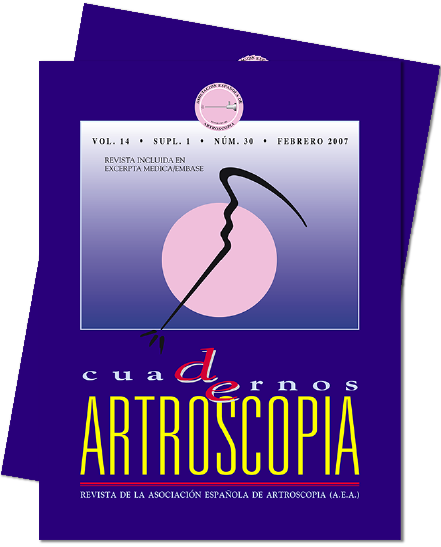Resumen:
Los conocidos efectos negativos a largo plazo de la meniscectomía, junto con los buenos resultados contrastados de la reparación meniscal, condicionan que progresivamente aumente la tendencia a conservar los meniscos. La indicación de reparación meniscal viene dada fundamentalmente por la localización y la naturaleza de la lesión y la edad del paciente, habiéndose comprobado, además, mejores resultados si la técnica se realiza conjuntamente con una plastia del LCA. Fundamentalmente, se utilizan tres técnicas de reparación (“dentro-fuera”, “fuera-dentro” y “todo dentro”), existiendo numerosos dispositivos para realizarlas. A pesar de existir gran cantidad de fijadores meniscales diseñados, parece que continúan vigentes los sistemas de sutura y, últimamente también, los sistema “todo dentro” basados en la sutura como técnica idónea de reparación.
Abstract:
The well-known longterm negative effects of meniscectomy, together with the demonstrated good results of meniscal repair, have led to a progressively increasing trend toward meniscal preservation. The indication for meniscal repair is mainly conditioned by the location and nature of the lesion and by the patient’s age; better results have furthermore been demonstrated when the repair technique is associated to ACL ligamentoplasty. Three repair techniques are mainly used (inside-outside, outside-inside, and all-inside), and a number of devices are available for carrying them out. Even though a large number of meniscal fixation devices have been designed, the suture systems seem to maintain their validity, in latter times together with all-inside systems based on suturing as the adequate repair technique.




